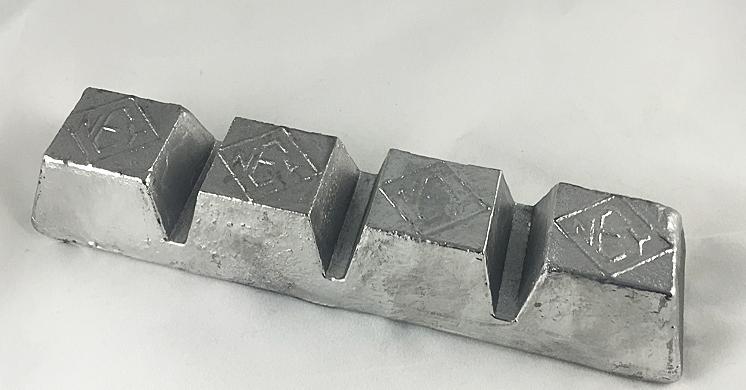Are you curious to know what is babbitt? You have come to the right place as I am going to tell you everything about babbitt in a very simple explanation. Without further discussion let’s begin to know what is babbitt?
When we hear the word “Babbitt,” our minds may conjure images of a mysterious and somewhat obscure term. While it may not be a household name, Babbitt holds a significant place in the worlds of metallurgy, industry, and even literature. In this exploration, we unravel the story of Babbitt, going beyond its definition as a metal alloy to reveal its historical, cultural, and literary significance.
What Is Babbitt?
At its core, Babbitt refers to a type of white metal alloy, typically made from tin, antimony, and copper. Its primary function is to provide a low-friction surface between moving parts in machinery, such as bearings. Babbitt’s ability to reduce wear and friction has made it a vital component in various industrial applications, from engines to turbines.
A Historical Perspective: Babbitt In The Industrial Revolution
The widespread use of Babbitt alloys coincided with the Industrial Revolution in the 19th century. As machines became more complex and powerful, the need for reliable and efficient bearings grew. Babbitt metal played a pivotal role in this era of industrial expansion, enabling the smooth and efficient operation of engines and other machinery. This contribution to the industrial world earned Babbitt a reputation as a symbol of progress and innovation.
Babbitt And American Literature: Sinclair Lewis’s Masterpiece
Babbitt also holds a unique place in American literature thanks to Sinclair Lewis’s iconic novel, “Babbitt,” published in 1922. The novel explores the life of George F. Babbitt, a middle-aged real estate agent living in the fictional city of Zenith. Through Babbitt’s experiences, the book satirizes the conformity, materialism, and societal expectations of the American middle class during the early 20th century.
In Lewis’s novel, the character Babbitt embodies the values and aspirations of his time. He is a conformist, driven by the desire for social acceptance and material success. The name “Babbitt” itself became synonymous with the quintessential middle-class American striving for the American Dream. The novel served as a critique of the homogenization of American society and the loss of individuality in the pursuit of conformity.
Beyond The Alloy: Babbitt As A Metaphor
In this context, Babbitt goes beyond being just a metal alloy. It becomes a symbol of the tension between individuality and conformity, a theme that resonates across time and cultures. Like the Babbitt alloy, individuals can find themselves caught in the friction between their inner desires for authenticity and the external pressures to conform.
The Modern Relevance Of Babbitt
In today’s world, where societal expectations and individual aspirations continue to clash, the concept of Babbitt remains relevant. The name is often used metaphorically to describe individuals who conform to societal norms at the expense of their true selves.
Conclusion:
Babbitt, both as a metal alloy and a literary symbol, has left an indelible mark on our culture. It reminds us of the importance of striking a balance between conformity and individuality, between societal expectations and personal authenticity. Whether in the world of industry or in the pages of literature, Babbitt stands as a testament to the complex interplay between tradition and progress, conformity and individuality, reminding us that even in the most unexpected places, we can find profound insights into the human experience.
To Find Out About Such Things Follow On AndActivate.
FAQ
What Is Babbitt Made From?
Babbitt is a white metal alloy that was patented by Isaac Babbitt in 1839. Over time, the term Babbitt has been applied to other similar white metals comprised of tin, copper and antimony. Lead can sometimes be added in place of the tin.
Where Is Babbitt Metal Used?
babbitt metal, also spelled Babbit Metal, any of several tin- or lead-based alloys used as bearing material for axles and crankshafts, based on the tin alloy invented in 1839 by Isaac Babbitt for use in steam engines.
What Is Babbit Also Known As?
Babbitt is also called Babbitt metal or bearing metal. It is used for the bearing surface in a plain bearing. Its is any of several tin or lead based alloys used as bearing material for axles and crankshafts, based on the tin alloy.
What Is The Process Of Babbitt?
BABBITTING is a process by which relatively soft metals are bonded chemically or mechanically to a stronger shell or stiffener, which supports the weight and torsion of a rotating, oscillating, or sliding shaft.
I Have Covered All The Following Queries And Topics In The Above Article
What Is Babbitt
What Is A Babbitt Bearing
What Is A Babbitt
What Is Babbitt Metal
What Is Babbitt Made Of
What Is Babbitt Bearing
What Is Natalie Babbitt Most Famous For
What Is Babbitt Metal Worth
What Is The Theme Of Tuck Everlasting By Natalie Babbitt
What Is Babbitt Material
What Is Babbitt Metal Used For
What Is Nickel Babbitt Worth
What Is Babbitt Made Out Of
What Is Babbitt Metal?
What Is A Babbitt In Words A Child Could Understand
What Is Babbitt
What is Babbitt made from
